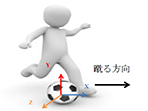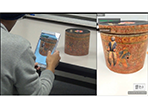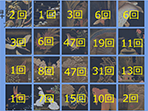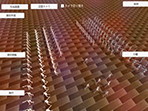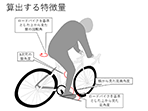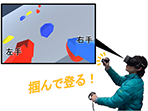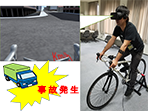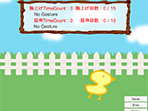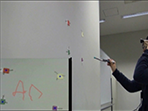| Using Motion Data to Compare Rotational Motions of a Ball by Different Kicking Methods |
In football, there are multiple ways to kick the ball, and the ball's rotation axis and direction of rotation are different depending on the way of kicking. Therefore, in this study, I used motion data to compare the rotational motions of balls made by different kicking methods and to verify whether the balls rotate according to a theoretical principle. I measured the ball motion by four different kicking methods using an optical motion capture system. I calculated the rotation angle of each of frame from the initial frame based on each of three axes as the key feature of the ball. As a result, it was confirmed that in the case of the in-step kick method, the amplitude of the rotation angle with respect to the vertical axis was larger than with the other methods and the ball rotated longitudinally. However, in the case of the inside kick method with similar vertical rotation, the amplitude was small. Likewise, at the rotation angle with reference to the horizontal axis, it was confirmed that the amplitude of the outside kick method was larger than that of the in-step kick method and the ball was transversely rotated. However, in the case of the in-front kick method, the power of the kick was weak and thus the ball did not rotate so much.
